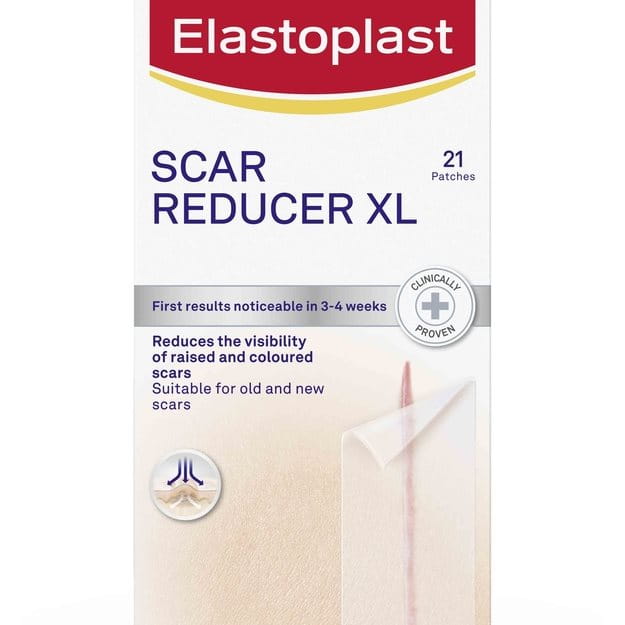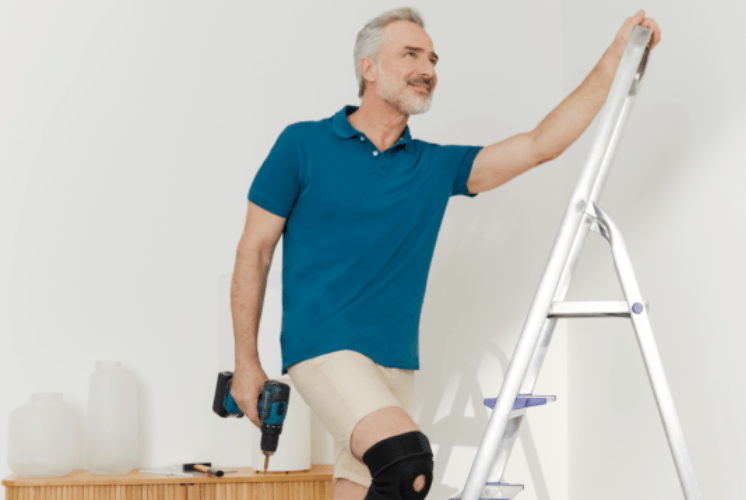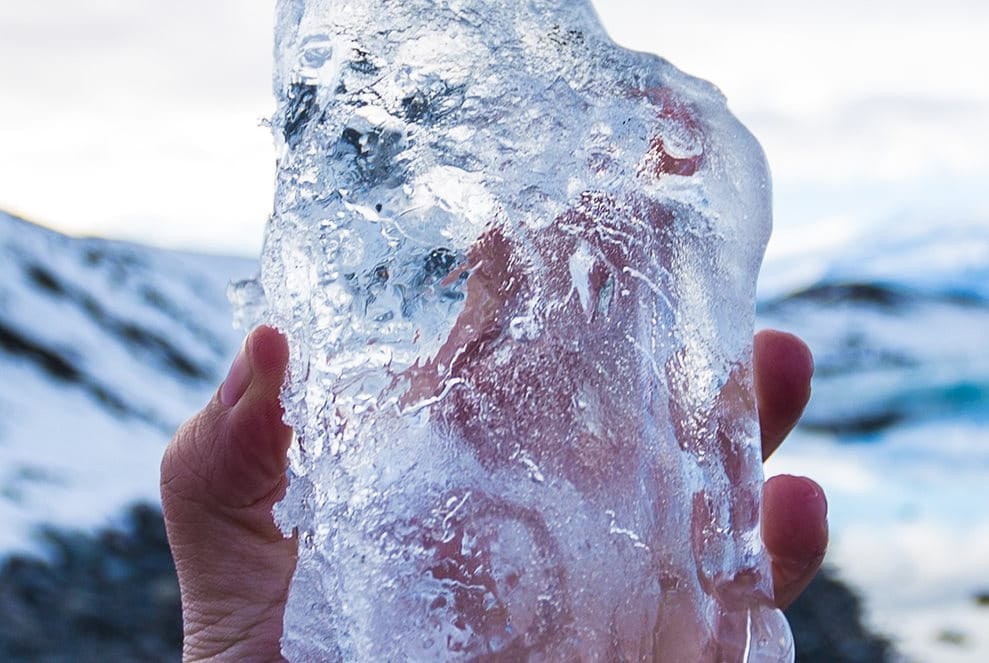Exercising is great for the body and mind, as it releases dopamine and serotonin. These chemicals produced by our brain improve mental health and lower the risk of depression. Being physically fit improves self-esteem and reduces the risks of life-threatening diseases.
However, injuries are more likely to happen when regularly partaking in physical activity. Sometimes they can be acute injuries that usually happen instantly. These can range from small injuries like skin lacerations to more serious ones like broken bones or torn muscles.
Others, if not treated correctly, can build over time and cause long-lasting pain that affects not only your ability to exercise but also can impact everyday life - these are known as chronic injuries. Both acute and chronic injuries are unpleasant, but they can be managed in a way to reduce their impact.
What are acute injuries?
Acute injuries typically occur suddenly and are often affiliated with trauma to the body. These forms of injuries are almost always isolated incidents - they do not indicate any long-term health issues.
They are usually caused by heavy impacts or sudden movement to bones, joints or muscles, and the injury will be isolated directly to the affected area. Breaking a bone from impact, and a strained or torn muscle are examples of acute injuries.
Symptoms of acute injuries
With acute injuries usually occurring spontaneously and causing pain instantly the symptoms are usually very noticeable but can range from injury to injury. Below is a list of common symptoms of an acute injury:
- Pain or tenderness: Sudden and intense pain at the site of the injury. The injured area may be tender to touch or pressure.
Swelling: Swelling may occur around the injured area due to inflammation and increased blood flow. - Bruising: Blood vessels may be damaged, leading to bruising around the injured site.
- Redness and warmth: The injured area may become red or feel warm to the touch due to increased blood flow and inflammation.
- Limited range of motion: Depending on the injury, you may experience difficulty moving the affected body part.
- Instability: A feeling of instability or weakness in the affected joint or muscle can occur.
- Muscle spasm: In some cases, the injured muscles may go into spasm, causing additional pain and discomfort.
- Loss of strength: Acute injuries can cause a temporary loss of strength in the affected area.
- Difficulty bearing weight: If the injury involves a weight-bearing joint or limb, you may find it challenging to put weight on the affected side.
- Popping or snapping sensation: Some injuries, such as ligament tears or joint dislocations, may accompany a popping or snapping feeling.
Common acute injuries
Acute injuries are almost always caused by intense impact to the body, therefore they can vary greatly in their severity.
- Sprains: Ligament injuries caused by stretching or tearing of the ligaments, usually due to sudden twisting or impact. Ankles, knees, and wrists are commonly affected.
- Strains: Muscle or tendon injuries resulting from overstretching or excessive use, often seen in activities involving explosive movements.
- Fractures: Bone breaks or cracks, usually caused by direct impact or high-force collisions.
- Dislocations: Joint injuries where the bones are forced out of their normal positions, often seen in contact sports.
- Concussions: Traumatic brain injuries caused by a blow to the head, leading to temporary cognitive impairment and other neurological symptoms.
- Cuts and lacerations: Open wounds caused by sharp objects or equipment, potentially leading to bleeding and infection.
- Acute tendon injuries: Sudden tears or ruptures of tendons, often due to powerful and explosive movements.
Is an ACL injury acute or chronic?
An ACL (anterior cruciate ligament) injury is typically considered an acute injury. The ACL is one of the major ligaments in the knee, and when it is injured, it can cause immediate pain, swelling, and instability in the knee joint.
If an ACL injury is not treated promptly and appropriately, it can lead to chronic knee instability, ongoing pain, and potentially long-term issues such as osteoarthritis.
Treatment for an ACL injury may involve surgical reconstruction of the ligament followed by a rehabilitation program to restore strength and stability to the knee. In some cases, non-surgical treatments may be considered, but the appropriate approach depends on the severity of the injury and the individual's activity level and goals.
The treatments for acute injuries are as varying as the types of injuries that can occur. A safe rule of thumb to follow after an acute injury is the RICE method:
- Rest: Avoid putting weight or strain on the injured area to prevent further damage.
- Ice: Apply ice packs to the injured area for 15-20 minutes every 1-2 hours, within the first 48 hours to reduce swelling.
- Compression: Use a bandage or compression wrap to apply pressure to the injured area to minimise swelling.
- Elevation: Raise the injured area above heart level whenever possible to reduce swelling and promote blood flow.
These steps will help with the initial occurrence of the injury, however depending on the injury further treatment may be required.
For skin lacerations, follow the Elastoplast Wound Care Routine by cleaning and protecting the wound.
What is a chronic injury?

Whereas acute injuries occur suddenly, chronic injuries typically build up over a long period of time, and can typically last over 6 months, it can also be from injuries that have healed as the pain signals can remain in the nervous system for years. They are one of the most common injuries associated with sports and physical activity.
Chronic injuries usually occur from poor technique, overuse or using improper equipment. This repetitive trauma to bones, ligaments and tendons causes pain and discomfort to build up over time, which can make it hard to pinpoint precisely what has caused the injury.
Symptoms of chronic injuries
As chronic injuries are still affiliated with pain in joints, muscles and bones, albeit over a longer period of time, they can share very similar symptoms, however, there are some key differences.
- Tenderness: The affected area may be tender to touch or pressure, indicating inflammation and irritation.
- Swelling: Chronic injuries can lead to persistent swelling, which may come and go depending on activity levels.
- Stiffness: You may experience stiffness or reduced flexibility in the affected area, especially after periods of inactivity.
- Weakness: Chronic injuries can cause muscle weakness in the affected region due to repetitive strain or imbalances.
- Pain during activity: The pain may be aggravated during specific activities that involve the injured body part.
- Pain even while resting: In more advanced stages of chronic injuries, pain may persist even when you're resting.
- Grating or clicking sensations: Some chronic injuries, such as certain types of tendonitis, can cause grating or clicking sensations during movement.
- Numbness or tingling: Chronic injuries that involve nerves may lead to numbness or tingling sensations in the affected area.
Common chronic injuries
Chronic injuries are more common than acute injuries but arguably have less variety.
- Tennis/Golfer's elbow: Inflammation and pain around the elbow, affecting the tendons on the outer (tennis elbow) or inner (golfer's elbow) side of the elbow, respectively.
- Runner's knee: Pain around or behind the kneecap, commonly experienced by runners and other athletes engaged in activities that involve repetitive knee flexion. Elastoplast’s Performance Knee Support provides active recovery with its dynamic guard technology.
- Achilles tendinitis: Inflammation of the Achilles tendon, which connects the calf muscles to the heel bone, often affecting runners and athletes involved in jumping sports.
- Shin splints: Pain along the shinbone (tibia), typically caused by overuse and common in activities involving running or jumping.
- Stress fractures: Small cracks in bones caused by repetitive impact or stress, often seen in weight-bearing bones like the shins, feet, or lower leg bones.
- Rotator cuff tendinitis/tears: Inflammation or tears in the tendons of the shoulder's rotator cuff, frequently seen in sports requiring overhead arm motions (e.g., baseball, swimming).
- Low back pain: Common in sports that involve repetitive bending, lifting, or twisting motions, like weightlifting or golf. Elastoplasts Protective Back Support proved protection and relief with its dynamic pressure adjustment and pain guard technology.
Chronic injury treatments
If you are experiencing pain or aches after exercising - or even at rest - the recommended first step is to follow the RICE method listed above. If the symptoms persist, it is important to see a healthcare professional, such as a physiotherapist who will be able to help diagnose the injury and start a treatment plan.
Then after a little time off, allowing the injury to heal, it is best to start gradually and progressively increasing the volume of activity, because this allows the joints, muscles and/or bones to heal correctly.
Wearing supports and braces to help stabilise the affected area is very beneficial and can improve your chance of a successful recovery period. Discover Elastoplast's full range of supports here.





